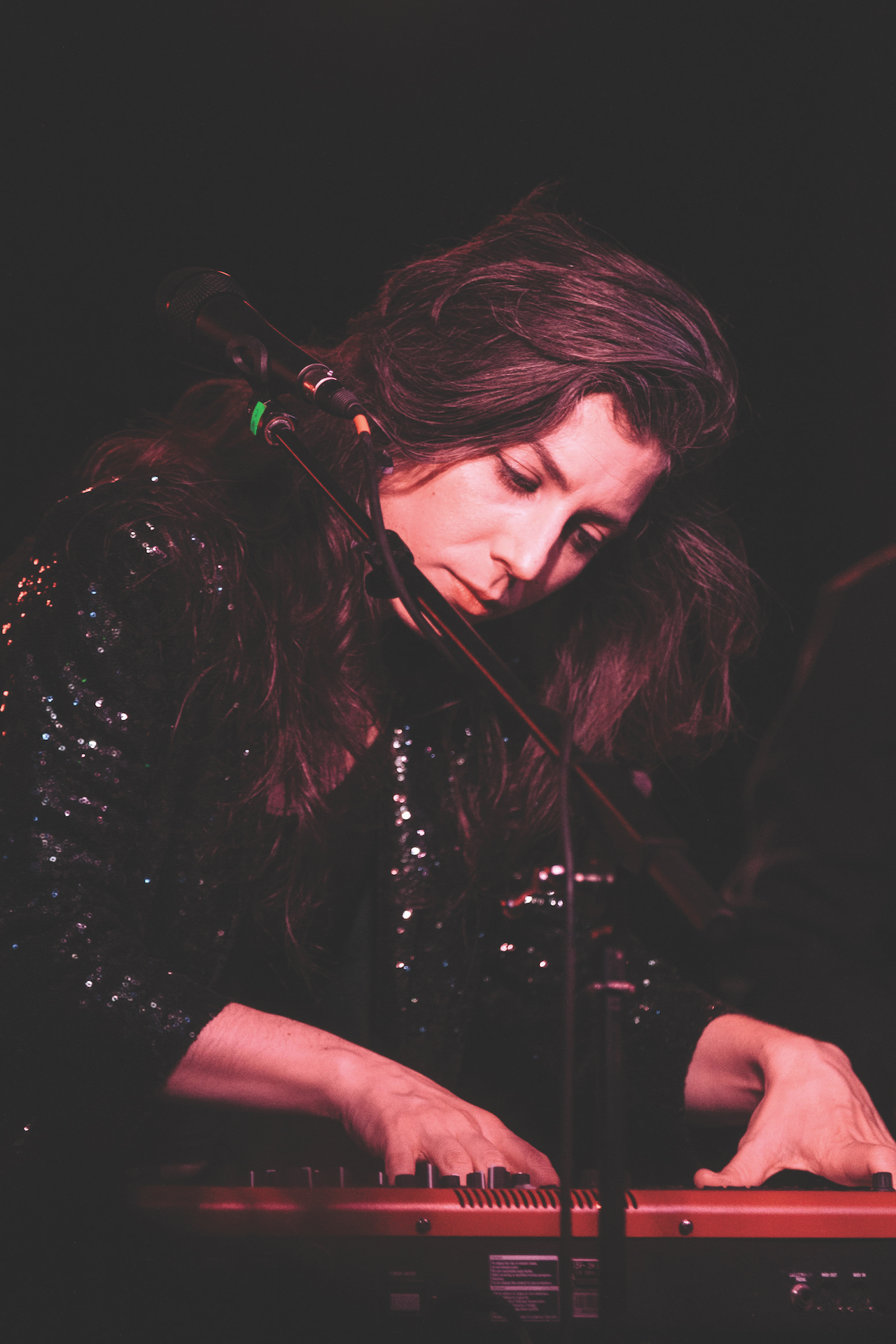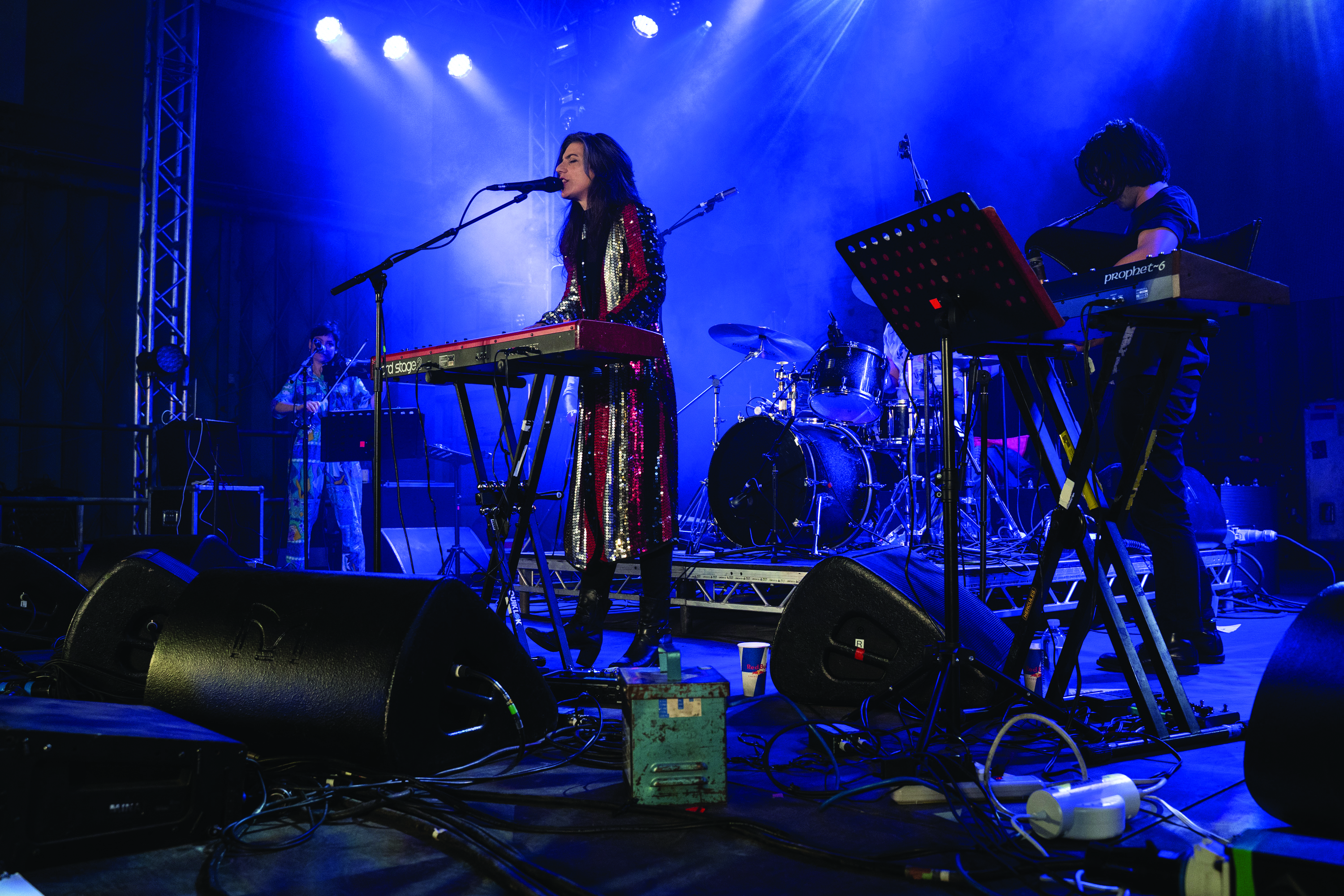Julia Holter on the Yamaha CS-60, Kate Bush and the parallels between composition and production: "So much of production is thinking about organising sounds in a similar way to on a sheet of music"
The composer-producer’s new album Something In The Room She Moves continues her quest to distil feelings we never knew had a name

Julia Holter’s work is about synthesis in its purest form. The California-based musician is gifted as a lyricist and musical worldbuilder, weaving in literary themes, concepts and reference points, from Greek mythology (Ekstasis) through to belle epoque Paris and the film Gigi (Loud City Song).
But she most notably of all shines when it comes to all things phatic and unspoken in both her vocals and composition. Holter’s true genius comes from a process that she describes as akin to “drawing feelings”.
The Domino Records artist knows a thing or two about conjuring atmosphere – in both her grandiose performances and the technical skills to translate that to record, as lead producer on most of her discography.
Despite being the child of a folk musician and an academic, her childhood musical turning points will be familiar to many – the Beatles and film music. Educated at the “casual and cool” CalArts as well as the more academically rigid University of Michigan, Holter experienced musical formation in an array of formats.
Yet somehow, the virtuosity of expression that Holter possesses is anything but studied. And on the way up her time spent with bedroom synthpop kingpins (Ariel Pink) and eccentric autodidacts (Linda Perhacs, whose backstory deserves its own piece) nourished her capacity to embrace the jagged edges of musicianship too.
Moreover, and something that MusicRadar readers will truly empathise with, is the significance of her discovery of self-production. As she told the Financial Times in 2019, “I started recording, and that freed me up a lot. That’s where a turning point happened where I had confidence. I didn’t have to communicate to anyone and I realised that I enjoy expressing myself performance-wise, which I never was aware of. I thought I was an introvert. But I got to express more poetically and freely by recording, and I loved the process.”

Holter’s discography and its relationship with the 3-minute song structure is complicated. Have You In My Wilderness turbo-charged her Spotify listening numbers in some respects, before follow-up Aviary took a more avant-garde reprise.
Want all the hottest music and gear news, reviews, deals, features and more, direct to your inbox? Sign up here.
But the constant of both is, without doubt, that dedication to synthesis and sonic distillation of passing emotion. So while the explanation for the title of new album Something in the Room She Moves – that the flipping of words in the title when playing around in Logic simply appealed to her sense of humour – might be disappointing to Beatlephiles, it’s also completely on brand.
When creating Evening Mood, she deliberately set out to recreate in musical form the feeling of oxytocin – the hormone associated with being in love in all of its forms. If she hadn’t very much succeeded in doing so, that would seem like a bold quest, but with her experience and mastery of textures, timbres and deft ear for their placement in a mix, if anyone was going to pull it off, it’s Holter.
We were lucky enough to be present for an unveiling of the new record in the setting of Tileyard Studio’s Dolby Atmos-bedecked Gallery the day before our interview with the good-humoured Californian, and had plenty of questions…
Tell us a bit about the album’s overriding themes..
“It’s perfect to focus on the production for me because that was the starting point. More than the poetic themes I was thinking about that. This one I went deep for sure. I think I was mostly going for a visceral feeling. That was more important to me than a story. The themes revolve around the labour of love. Being in love versus faraway love and troubadour love. The love that’s real that has difficulties and changes you. So poetically that is a theme but also the importance of change and transformation.”
Many of your albums take literature or media forms as a startpoint. Were there any particular focal points for this new one?
“I was mostly trying to capture feelings around the above. That sounds general but that’s different to other approaches.”
You’ve said that you like to “draw emotions”, eg how you were trying to capture the feeling of “oxytocin”? What is your process for sound design?
“I wanted the record to have lots of continuous pitch instruments, like fretless bass. Dev Hoff’s bass played a big role in this record. And I used the Yamaha CS-60, Blade Runner synth, one of my favourites – it wasn’t mine but in the studio. And we did a lot of drum programming. I was working with the drummer Beth Goodfellow but then I would filter her work very heavily with GRM plugins – using the resonance plugin. Super-filtered sound, bringing up the resonance and making it metallic sounding. That’s in Talking in a Whisper and Evening Mood.
"So lots of filtering and atmosphere. Creating a fluid world, or something. And it’s kind of a warm sound in general in this record, whatever that means. Also the CS-60 has this ribbon controller that has this ability to do lots of glissandi and portamento that’s just so good. You hear that on tracks like Ocean where I play a lot with it. There’s something where it can go all the way down [impersonates a whale]. I love that. Kate Bush’s productions in particular influenced me.
"She was really involved in every aspect of the music. Breathing [released 1980, from the album Never Forever] is a track which was something I was curious about the production for. That era of bass and synthesisers. And the topic of a foetus breathing air after a nuclear fallout. I think the thing with breathing so much with Covid is a good example of something going on recently that had an effect on the record.”
The fretless bass really does stand out on the album. Were there other particular instruments to note?
“Flute and piccolo is something that I hadn’t worked with before [played by Maia (aka Sonjia Denise Hubert Harper) on the album]. There’s no real answer why I wanted flute but I really wanted it. I think because I wanted to sing breathily and high pitched.
“One thing I haven’t mentioned before is other than the bass, there are no strings on the record. Unusual for me. So that’s of note. Lots of wind. Maia and Chris Speed [saxophone, clarinet] are both really accomplished in jazz and improvisation, very abstractly doing their own things. Those two were amazing. My partner Tashi Wada played the Prophet and OB-X. He recently got the Oberheim. So that sounds really nice. He plays bagpipe on one track. It’s subtle [on Sun Girl].”
What’s your favourite instrument to work with?
“The obvious one is keyboards as it’s my main one. I love strings but I thought it was interesting not to do it this time.”

You’ve spoken about how you made the move from composition to production headspaces. Can you expand on that?
“There was an obvious connection between composition and what you do in production. In composition you’re looking at orchestration and organisation. Timbres, and ranges of instruments. So much of production is thinking about organising sounds in a similar way to on a sheet of music. The types of textures.
“For me there has always been this grey area between production and writing because it’s always been part of the writing in a way. So it’s confusing sometimes to separate it out. So much of Evening Mood is about production and the story that tells. It worked similarly with Sun Girl.”
Is your process of putting an album together any different to how it was when you started?
“For me it’s about trying things. I don’t have a big idea. I sit down with a keyboard and I put on a vocal mic so that there’s a vocal and keyboard recording at the same time. I don’t usually have a preconceived idea of what I want. I come up with something. And I start to follow what I’m doing.”
In terms of collaborators, how do you seek people out? Is it specific or à la carte?
So much of production is thinking about organising sounds in a similar way to on a sheet of music. The types of textures
“Generally it’s the same group but sometimes I switch it up a bit and try new things. I am the main producer on the track but there’s also Kenny Gilmore. He is with me for a lot of stuff. He is doing the recording engineering and mixing. I loved working with him because he’s so talented and gets my music. I think he was actually at my first concert ever. I just think because he knows the music and is so fun to work with, he knows how to make all sounds sound good. He knows about the layers of percussion and that stuff. To really bring them out. Sounding rich and full.”
Because you’re so involved in the choices yourself, how does collaboration feel for you?
“No it’s great. Kenny will do stuff on his own too. But I work on stuff on my own at home and then send it to him. I wouldn’t be good at that. I have mixed my own music before and it’s OK but it sounds a lot better when he does it.”
Being such intimate music, choice of studio must have been important…
“We recorded mainly at 64 Sound in Highland Park in Los Angeles and I did most of the stuff there. I recorded a lot of keyboard stuff at home.”
What’s your home studio like?
“It’s not soundproof but it’s more like an office. My little Apogee Duet interface which is ancient. Not very exciting and very messy. Stuff everywhere.”
What’s your desktop like?
“I’m really simple. Just Logic. I tried Ableton Live briefly. And Pro Tools. Text Edit for all of my lyrics”.
Is there any particular gear on your wishlist?
“Some kind of newer version of the CS-60 would be great. I believe what I’m thinking of is a spin-off of the Black Corporation’s Deckard’s Dream [possibly Deckard’s Voice]. The smaller one, but it was less pivotal? I’d like either one of those anyway!”
What would you save in a fire?
“Probably my hard drive. I don’t have that much gear. My Nord which I bought in 2012. Not because I don’t want to buy more but it somehow doesn’t occur to me!”
How do you plan your onstage setup? Your music being often less about repetition than organic movement…?
“I prefer not to have a lot of pedals. I did looping at an early stage. But I prefer not to have anything strange in any way when I’m onstage. Simple. Sometimes I even just play the keyboard. And when I’m with the band it’s also fine just to do that. For me the fun of performing is getting lost in the music. I don’t like thinking too much.”
Julia Holter’s Something In The Room She Moves is out on Domino on March 24th.




